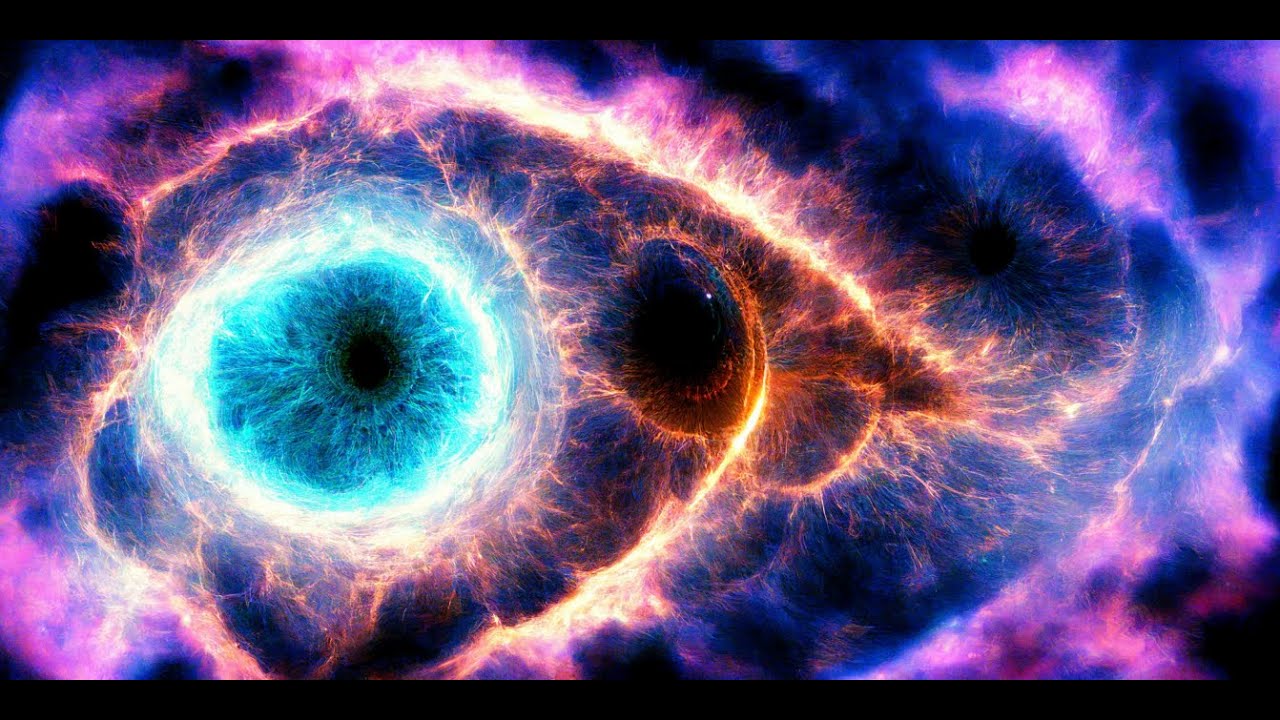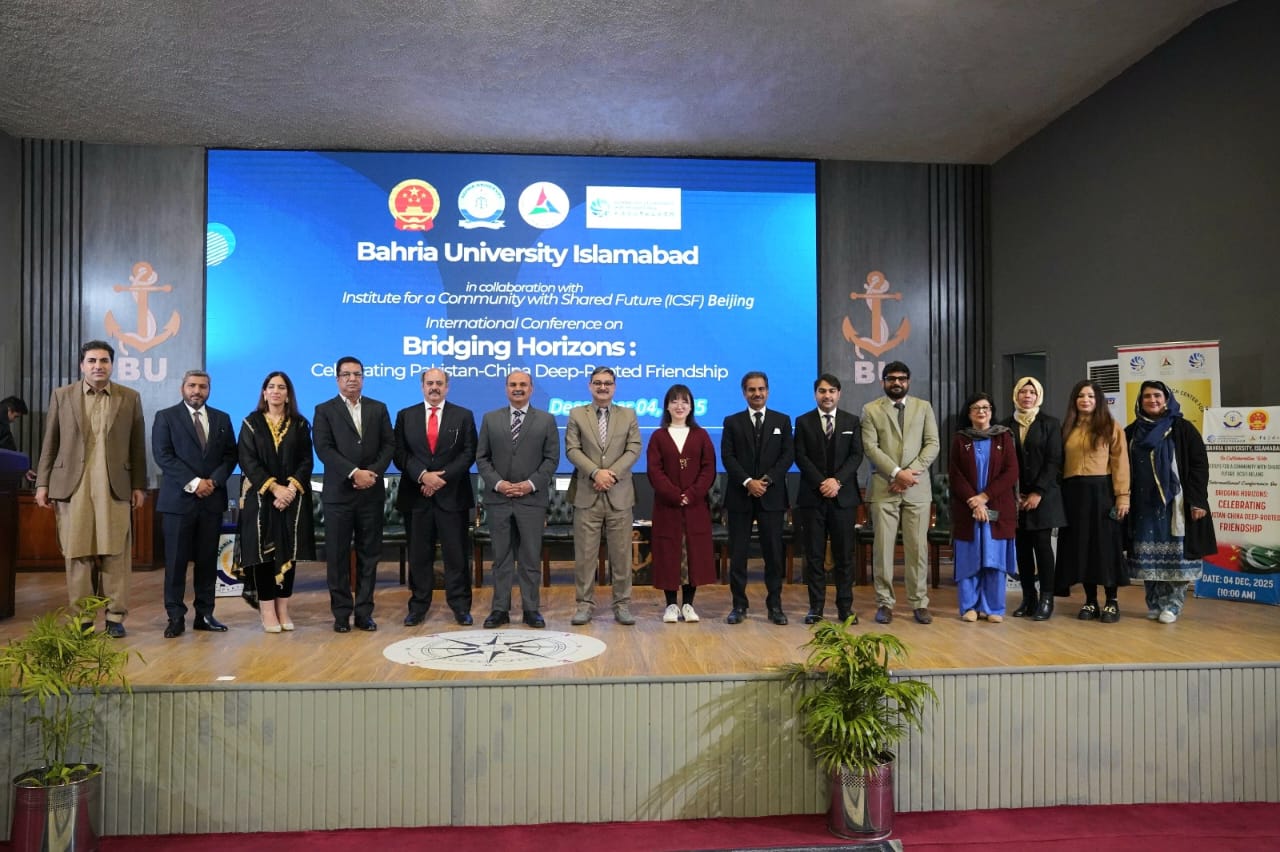Analytical Idealism is a compelling metaphysical theory that situates consciousness rather than matter as the fundamental ground of reality. Developed and championed by Bernardo Kastrup, it presents a paradigm-shifting approach to understanding existence, inverting the conventional materialist view by proposing that the physical world is a manifestation within consciousness itself. Unlike traditional forms of idealism, Analytical Idealism strives for logical coherence and empirical compatibility, drawing upon insights from neuroscience, quantum physics and cognitive science.
This article introduces the foundational principles of the theory and evaluates its most pressing conceptual challenges. While Analytical Idealism offers a refreshing and unifying worldview, several philosophical and logical gaps remain unresolved. These include internal contradictions within a single universal consciousness such as reconciling conflicting subjective experiences the absence of teleological purpose to explain cosmic order, the arbitrariness of distinctions between living and non-living entities, the lack of an ethical framework and the unresolved nature of temporal continuity and individuality.
Crucially, Analytical Idealism does not fully address the role of conscience the inner moral compass that allows self-aware beings to resonate with ethical truth. Without a metaphysical principle that explains how conscience arises, why it matters and how it endures, the theory remains ethically inert. Conscience is not merely a by-product of cognition or cultural conditioning; it is the interpretative function of deeper consciousness, the soul’s mechanism for discerning harmony or dissonance with the cosmic order. It implies not only awareness but accountability. Its absence in non-reflective beings distinguishes inert consciousness from moral agency.
The purpose of this article is not to undermine the theory but to critically analyse these tensions as necessary steps toward philosophical refinement and deeper metaphysical clarity. Importantly, if these gaps can be addressed particularly by integrating intentionality, hierarchy and accountability into the framework, a new Theory of Universal Consciousness could emerge. Such a theory would not only resolve Analytical Idealism’s paradoxes but also answer existential questions about meaning, morality and humanity’s role in the cosmos.
For instance, by positing a purposeful foundation for reality e.g. a cosmic architect or guiding intelligence it could explain the universe’s fine-tuned laws and life-permitting constants as deliberate design rather than accidental by-products. A hierarchical structure of consciousness, ranging from static awareness in matter to dynamic cognition in animals and culminating in conscience-bearing selfhood, would clarify the metaphysical distinction between living and non-living entities. This taxonomy is not arbitrary but ontological, it reflects a spectrum of resonance with the universal moral field.
Ethical frameworks and karmic accountability could then arise naturally from this hierarchy, transforming subjective morality into an objective cosmic imperative. In this view, individuality is not a dissociated fragment of a larger mind but a localized moral node structured by a quantum interface such as a “spirit-box” that retains identity, conscience and karmic imprint across lifetimes. These structures would serve as metaphysical vessels for moral memory and soul evolution, tethered to but distinct within the universal whole.
By bridging these gaps, a refined universal consciousness theory could unify science, philosophy and spirituality offering a roadmap for humanity’s existential and ethical evolution. It would transform consciousness from an abstract substrate into a dynamic, intentional force one that imbues existence with purpose, resolves the paradox of individuality-in-unity and provides empirical grounding for phenomena like near-death experiences or collective moral intuition. In doing so, it would elevate idealism from a descriptive framework to a prescriptive cosmology answering not only what exists but why we exist and how to live. The unresolved tensions in Analytical Idealism, therefore, are not just weaknesses but invitations to reimagine consciousness as the heart of a grand meaningful symphony rather than a purposeless mental void.
Introduction to Analytical Idealism
Analytical Idealism is a metaphysical framework asserting that consciousness not matter is the fundamental substrate of reality. Developed and popularized by Bernardo Kastrup, the theory posits that the universe and everything within it exist as experiential contents of a universal consciousness. Unlike classical idealism which often veers into mysticism or theological interpretations, Analytical Idealism seeks to remain logically rigorous and grounded in empirical data, especially insights from quantum mechanics, neuroscience and cognitive science.
Whereas physicalism claims that consciousness emerges from physical processes in the brain, Analytical Idealism inverts this claim: brains and bodies are appearances within consciousness. Reality, therefore, is not “out there” as a mind-independent world; instead, what we call the physical world is the extrinsic appearance of mental processes occurring within a single unified field of consciousness.
Key Tenets of Analytical Idealism
- Primacy of Consciousness: All phenomena, including space, time, matter and energy are modulations within consciousness.
- Universal Mind: There exists a universal consciousness or mind and individual minds (human or otherwise) are dissociated segments or alters of this one mind.
- Empirical Consistency: Analytical Idealism seeks alignment with empirical science, interpreting neurological correlations as reflections of how consciousness localizes and modulates itself.
- Dissociation Model: The appearance of separate individuals results from dissociative processes within the universal consciousness akin to how multiple personality disorder (DID) creates separate centres of awareness within a single brain.
Philosophical Motivation
Analytical Idealism addresses the “hard problem” of consciousness, the challenge of explaining how subjective experience arises from objective brain matter by rejecting the assumption that matter is primary. Instead, it proposes that matter is a representation within experience. Just as a dream appears real but arises entirely within a mind, the world we perceive is a mental construct existing within a larger field of awareness.
This theory aims to restore a deeper sense of coherence to our understanding of existence, offering a non-dualistic alternative that bridges the divide between mind and matter. However, as we’ll now explore in depth, there are critical philosophical and logical tensions within Analytical Idealism that remain unresolved.
Analytical Idealism stands as a remarkable and courageous philosophical effort by its chief proponent Bernardo Kastrup to reorient our understanding of reality by placing consciousness not matter at the foundation of existence. It offers an elegant alternative to both reductive materialism and naïve spiritualism bridging modern scientific insight with introspective metaphysics. By framing the universe as a mental construct within a universal consciousness, the theory opens profound avenues for interpreting subjective experience, the nature of perception and the mystery of being itself.
However, as with any ambitious philosophical model, Analytical Idealism also invites a host of unanswered questions that warrant deeper multidimensional analysis. These include conceptual gaps around internal contradictions within a single consciousness, the lack of a clearly articulated teleology or cosmic intent and unresolved issues regarding individuality, moral structure and temporal continuity. The theory’s richness is precisely what demands such scrutiny not as a rejection but as a vital process of refinement and expansion. The following sections critically explore these conceptual tensions not to dismantle the theory but to engage with it in the spirit of philosophical evolution and deeper metaphysical understanding.
- Conflicting Perspectives in a Single Universal Mind
The Gap: Logical Incoherence of Simultaneous Contradictions
Analytical Idealism proposes that all individuals are dissociated alters of a single universal consciousness. But this poses a fundamental challenge: how can the universal mind simultaneously host mutually exclusive experiences such as pain and joy, love and hatred or truth and falsehood without collapsing into contradiction?
In logic, the principle of non-contradiction states that contradictory propositions cannot both be true in the same sense at the same time. If everything exists within one mind, then all these conflicting experiences must coexist within it. Does this not undermine the unity and coherence of that mind?
Expanded Analysis
One might argue that the universal consciousness is like a vast ocean with different weather patterns in separate regions stormy in one area and calm in another. However, this metaphor breaks down under scrutiny. An ocean doesn’t possess cognitive unity; a mind does. Consciousness, by definition is that which knows. If it knows everything including mutually exclusive truths then it knows contradictions which is logically impossible.
Furthermore, when we apply this framework to real-world experiences, the conflict becomes starker. Consider two dissociated alters: one committing an act of violence, the other experiencing compassion. If both are expressions of a single mind, does the universal mind endorse both? Is it complicit in all acts and emotions regardless of ethical or logical consistency?
Consider the example of a soldier killing another in war. One consciousness is in pain, the other victorious. If both are manifestations of the same mind, does the universal consciousness endorse both? Such contradictions suggest either fragmentation or pathology and not coherence.
Unless Analytical Idealism can articulate a mechanism that accommodates simultaneous conflicting perspectives within a unified cognitive structure, it risks collapsing into incoherence. This leads us to either reject the unity of consciousness (implying multiplicity and fragmentation) or accept a form of cognitive dissonance at the highest level essentially making the universal mind incoherent or pathological. Neither is satisfying for a theory that aims to explain reality’s unity and intelligibility.
If all individuals are dissociated alters of a single universal mind, how can this mind coherently host mutually exclusive experiences (e.g., simultaneous pain and joy)? This appears to contradict the principle of non-contradiction and implies fragmentation.
- Lack of Teleology and Design in the Cosmos
The Gap: Spontaneous Mental Field, A Super-Precise Universe with Fine-Tuned Precision from a Random Mind?
Analytical Idealism says that everything we experience including matter and energy comes from a kind of universal mind or “mental field.” But this idea raises a big question: If this universal mind has no clear goal or plan, why is the universe so perfectly organized? Analytical idealism rejects physicalism but doesn’t offer a coherent reason for the finely-tuned order of the universe. Why would a “mental field” spontaneously yield cosmic precision?
Expanded Analysis
The universe follows incredibly precise rules. The laws of physics, the way gravity works, how atoms stick together it’s all extremely fine-tuned. For example, the cosmological constant (which affects the expansion of the universe) has to be accurate to one part in 10^120. That’s like hitting a single atom in the entire observable universe with a dart from Earth blindfolded. Or take the electromagnetic force: if it were just a tiny bit stronger or weaker, atoms couldn’t form and life couldn’t exist.So here’s the puzzle: Why would a universal mind with no specific plan or structure create something this stable, detailed and life-permitting?
Think about dreams. They’re also mental but often chaotic. Scenes shift randomly, logic breaks down and strange things happen without explanation. If our entire universe is also “mental,” then why doesn’t it behave like a dream random and unpredictable? Dreams, often cited as mental analogies, lack consistent structure. So why doesn’t the universe resemble a chaotic dreamscape if it’s fundamentally mental? The precision of natural laws suggests not spontaneity but intentional design.
While rejecting materialism, Analytical Idealism still relies on the physical universe’s fine-tuned order to validate its claims. But why would a mind without purpose or goal generate such extraordinary regularities like the cosmological constant or the gravitational balance that allows life to exist?
This implies that the universal consciousness is not just experiential but teleological capable of sustaining cosmic order with purpose. Analytical Idealism, however, hesitates to define this structure or intent. Without a developed account of the universal mind’s organizing intelligence, the emergence of physical lawfulness remains a mystery. This leads to a contradiction. Analytical Idealism says the world isn’t built by physical rules alone (it rejects physical determinism) yet it depends on those very physical patterns gravity, time and energy to make its case. So what’s holding everything together? What’s the blueprint?
If this mental field doesn’t have purpose, intelligence or a guiding principle then how can it generate a reality that looks like it was engineered with mind-blowing precision?
It seems that Analytical Idealism quietly relies on some kind of cosmic intelligence or purposeful consciousness but doesn’t openly admit or explore that idea. In other words, to explain such an ordered world, the theory needs a designer-like mind but it doesn’t say who or what that is.
Physicalists attribute this to brute facts, multiverse hypotheses or anthropic reasoning. Analytical Idealism must do better. If everything is an appearance within consciousness, then consciousness itself must possess a structure capable of producing regularity, purpose and design. But the theory doesn’t elaborate on this.
Unless the universal consciousness is endowed with an intelligence and intention comparable to (or far exceeding) a cosmic designer, the origin of order remains inexplicable. Thus, Analytical Idealism implicitly requires a teleological layer a purposeful intelligence that can account for structured emergence yet it does not name or develop this.
3. Arbitrary Division Between Living and Non-Living
The Gap: Why Does Metabolism Determine Consciousness?
Analytical Idealism asserts that what we call “matter” is just a mental image an extrinsic appearance of conscious processes. It maintains that individual minds emerge from certain configurations (i.e., metabolizing organisms) but doesn’t explain why only living systems are granted subjectivity or internal experience. If all is consciousness, why not extend subjective experience to a rock, a crystal or a mountain?
Expanded Analysis
This gap points to a category mistake. If everything is a modulation of mind then what defines subjective experience versus mere appearance? The theory holds that living beings are “dissociated alters” with inner lives while inanimate objects are not but why draw this boundary? Analytical Idealism claims that only living systems (with metabolism) are dissociated alters of the universal mind. Inanimate objects like rocks are said to be mere “mental images.” But if all things arise in consciousness, why is subjectivity limited to organisms?
Take a crystal: it exhibits growth, symmetry and mathematical precision. If it’s part of the same mental field as a tree or a dog, why deny it subjective depth? Is it because it doesn’t metabolize? That makes consciousness contingent on chemistry which contradicts the theory’s foundation that consciousness is not dependent on physical processes.
Moreover, by making consciousness dependent on metabolism, Analytical Idealism inadvertently collapses into panpsychism-lite, where certain physical configurations mysteriously unlock subjective awareness. This undercuts the claim that consciousness is fundamental and unconditioned.
If the physical world is merely appearance then the emergence of inner experience must depend on informational or self-referential complexity not chemistry. Analytical Idealism must articulate why certain configurations within the mind-field acquire interiority while others remain mere images. Without this, the living/non-living distinction is metaphysically unjustified.
Instead, the theory needs a mechanism perhaps something akin to recursive self-referentiality or self-awareness loops to distinguish why some patterns in consciousness are “internal” while others are merely external images. Without this, the division remains arbitrary and metaphysically weak.
4. Absence of Ethical or Moral Foundation
The Gap: If All Is One, What Makes Anything Wrong?
If all experiences are expressions of the same universal consciousness, then no act no matter how violent, selfish or unjust can be fundamentally wrong. It is simply one facet of the One Mind exploring itself. This view leads to ethical relativism or worse nihilism.
Analytical Idealism as currently formulated provides no moral framework. If all experiences are just expressions of the same universal mind, what makes one act better than another? There is no moral anchor.
Expanded Analysis
If all experiences are merely facets of a single universal consciousness, then moral distinctions lose meaning. A torturer and a healer are equally valid expressions of the One Mind. Analytical Idealism offers no moral compass. This poses a serious problem. If no act is inherently wrong or right, what governs ethical behaviour? Can one appeal to the “will” of the universal mind? If so, what is its moral structure?
Consider this: if a murderer and a saint are both expressions of the universal mind and neither has true autonomy outside that field, how can we praise one and condemn the other? Under Analytical Idealism, evil and good are illusions or fluctuations of the same ultimate Being. That’s metaphysically neat but ethically disastrous.
To build a sustainable worldview, morality must arise from something intrinsic not extrinsic social contracts or cultural norms. If Analytical Idealism denies physical reality and sees all as mental then ethics must be embedded within the structure of consciousness itself. But the theory fails to define such a structure.
Contrast this with systems like Kantian ethics or theological moral realism, which anchor moral law in rationality or divine will. Analytical Idealism could potentially posit an “ethical gradient” within the universal mind where more integrative or harmonious expressions of consciousness are better but this is undeveloped. Unlike religious systems or Kantian ethics, which anchor morality in divine will or rational duty, Analytical Idealism remains ethically inert. It must evolve to include a built-in moral gradient within consciousness where integration, empathy and harmony are superior modes of being. Otherwise, it risks spiritual relativism and ethical nihilism.
Without moral teleology, the theory risks becoming spiritually hollow, it describes the world but fails to guide behaviour. This is a major shortfall for a metaphysics that wants to replace materialism as a comprehensive worldview.
5. Problematic Dissociation Metaphor (DID)
The Gap: Pathology vs. Design
The theory borrows the metaphor of dissociative identity disorder (DID) to explain how individual consciousness’s can exist within one universal mind. But DID is a pathological condition a breakdown of integration. Why assume that the universal mind fragments itself into alters? Wouldn’t this imply a sick cosmos or a flawed design? Using DID to describe individual minds within a universal consciousness suggests pathology and fragmentation, not design.
Expanded Analysis
Analytical Idealism uses Dissociative Identity Disorder (DID) as a metaphor for individual consciousnesses within the universal mind. But DID is a pathological condition, implying trauma and fragmentation.
Using DID as an analogy has rhetorical appeal but raises dangerous implications. In DID, personalities are fragmented often due to trauma and some other drivers. If that’s the model for human consciousness, are we saying the universal mind is traumatized? This invites a paradox: why would a perfect, self-sufficient consciousness suffer dissociation?
A more appropriate model would be self-reflexivity not pathology. Perhaps the universal mind generates “windows of awareness” for creative exploration or relational dynamics. But that’s not dissociation that’s deliberate individuation. Calling it dissociation implies dysfunction rather than intention.
This metaphor also leads to ontological confusion. Are we truly separate or only appearing so? In DID, alters often don’t know each other. If this applies to us then free will, agency and identity are illusions. Yet the theory wants to preserve these features while using a model that undermines them.The metaphor of DID should be replaced with a higher-order functional mechanism such as nested consciousness, modular awareness or a quantum observer pattern. Only then can Analytical Idealism provide a robust theory of individuality without invoking mental illness as its template. Why would the universal mind fragment itself in such a way? This implies dysfunction at the cosmic level. A better analogy would be intentional differentiation, like cells from a stem cell not accidental splitting from trauma.
Relying on a pathological metaphor undermines the elegance and purpose of individuation. The theory needs a new framework perhaps modular consciousness or intentional self-localization to describe individuality without invoking mental illness.
6. Unclear Mechanism for Conscious Boundaries
The Gap: Why Don’t Minds Interpenetrate?
If we are all expressions of the same field of consciousness, why can’t one individual mind access the thoughts or experiences of another? What keeps us mentally sealed off? If all minds are part of a single field, what prevents one from accessing another’s thoughts or memories? The theory doesn’t explain how boundaries between alters are maintained. The theory is vague on what enforces the boundaries between alters. How can individual minds remain unaware of each other if they are all part of a single mind? The theory doesn’t explain clear cognitive separations.
Expanded Analysis
In DID, alters are sealed off due to neurological walls and compartmentalization. But if our boundaries are purely mental, then what prevents me from experiencing your mind or vice versa? In DID, barriers are neurological. In Analytical Idealism, there is no physical substrate. So what enforces isolation? Without clear cognitive separations, personal identity becomes illusory.
Here’s the problem: subjective insulation is unexplained. The theory appeals to “dissociation,” but doesn’t explain the mechanism. How does the One Mind prevent leakage or merging of perspectives? This raises profound implications for memory, personal identity and privacy. If there’s no genuine separation then all experience is ultimately shared and the illusion of individual personhood breaks down. If there is real separation then something stronger than mere dissociation must be at play perhaps a quantum boundary condition or metaphysical firewall. Without a rigorous account of these boundaries, Analytical Idealism cannot explain the first-person perspective which is central to its claim that consciousness is primary.
This lack of boundary mechanism weakens the theory’s explanatory power. It must propose a mental firewall or quantum DE coherence model to explain how unique selfhood is preserved.
7. Temporal and Subjective Continuity
The Gap: Timeless Mind, Linear Experience?
Analytical Idealism holds that the universal mind is timeless and eternal. Yet we experience linear time, memory, growth and personal identity. How does this square? The universal mind is said to be timeless, yet we experience life in sequence with memory, planning and personal growth. How does a timeless source generate linear subjective time? Why does a timeless mind generate temporally-bound selves? If the universal mind is timeless, how do individuals experience linear time and preserve personal identity over it?
Expanded Analysis
If you recall your childhood, feel anxiety about tomorrow and make plans, you are engaging in narrative identity a temporally structured selfhood. But if yours deeper identity is the universal mind and that mind is beyond time then where does this timeline come from? Analytical Idealism does not answer this. At best, it gestures toward dream-like processes. But dreams often lack temporal structure. The stable unfolding of life with cause and effect, personal continuity and sequential memory requires internal temporality.
Moreover, subjective continuity suggests that time is more than illusion. It’s a lived reality. Analytical Idealism needs to explain:
- Why time appears linear to alters.
- How continuity is preserved across brain changes or even death.
- Whether subjective time reflects a deeper rhythm in the universal consciousness.
- How linear time emerges from the timeless field.
- How subjective continuity is preserved.
- Why some experiences are bound in memory while others fade.
One promising solution might be to posit internal harmonic cycles or involve harmonic or cyclic structures within the mind-field that create rhythm and sequentiality generating temporal flow. But this would require extending the theory into process metaphysics something it currently avoids.
Additional Points
These additional points consciousness development, non-human and extra-human awareness, archetypal structures, intentionality and the problem of suffering are essential to creating a more complete and comprehensive theory of consciousness. By addressing these gaps, we can move toward a system that doesn’t just describe consciousness as an abstract, timeless phenomenon, but as a dynamic, evolving and morally coherent force that resonates through all forms of existence.
Incorporating these ideas into the framework of Universal Consciousness would allow us to craft a more unified, inclusive and applicable metaphysical system one that answers the questions of suffering, growth and the relationship between the self and the greater whole. This approach will bring clarity and depth to the ongoing philosophical exploration of consciousness, enabling it to better reflect the full richness of the human experience and the diverse forms of awareness in the universe.
While the current analysis of Analytical Idealism is thorough and multifaceted, a few more points could further enrich and reinforce the critique:
- Lack of Ontogenetic Explanation (Development of Consciousness): How does consciousness evolve from infancy to maturity within individuals if it is an expression of an unchanging, timeless mind? Analytical Idealism does not explain the psychological development or learning arc that seems integral to conscious beings.
Ontogeny refers to the development of an individual organism, in this case, the growth of consciousness as an individual matures. The challenge in Analytical Idealism is that it views consciousness as an expression of a timeless unchanging universal mind. But this leads to a big question: How do individual beings, from infants to adults develop their consciousness over time?
For example, a new-born baby has no clear sense of self or understanding of the world. As the baby grows, it gains awareness of itself and its surroundings, learning through experience, language and social interaction. How does this gradual development of awareness fit into a model where consciousness is seen as already fully present and unchanging in its pure form?
In simple terms, Analytical Idealism doesn’t explain how a timeless mind could give rise to the dynamic, evolving consciousness of a human being. Without a development model, the theory misses out on explaining the psychological journey that individuals undergo as they learn and grow throughout their lives.
- Silence on Non-Human and Extra-Human Consciousness: The theory does not adequately explore consciousness beyond human dissociation e.g., animal consciousness, machine awareness or hypothetical alien intelligences. This omission limits its scope as a universal metaphysics.
Another important gap in Analytical Idealism is its focus on human consciousness while ignoring the awareness of other beings like animals, machines or even potential extra-terrestrial life. If all consciousness is part of one universal mind then what about the minds of non-human creatures? How do animals experience consciousness? What about artificial intelligence, can machines become conscious too?
For instance, many animals seem to have a level of self-awareness. Dogs recognize their owners, birds can use tools and dolphins appear to have complex social structures. How does the universal mind according to Analytical Idealism account for the consciousness of these beings? Similarly, what about the possibility of alien consciousness? Could other civilizations in the universe possess their own forms of awareness? By not addressing these questions, Analytical Idealism limits its scope and fails to provide a truly universal explanation of consciousness.
- Neglect of Archetypal Structures: Analytical Idealism misses the Jungian and Platonic angle how archetypal forms or collective unconscious patterns fit into the mental universe. If all is mind, are these archetypes mental invariants? If so, what role do they play in shaping dissociated experiences?
Archetypes are universal patterns of thought, behaviour or symbols that appear across different cultures and eras. They were famously explored by Carl Jung who believed these patterns live in the collective unconscious a shared mental framework that transcends individual experience.
In Analytical Idealism, if all reality is ultimately mental, what role do archetypes play in this system? For example, the idea of the “Hero” archetype, seen in countless myths and stories around the world seems to suggest something universal in human consciousness. But how does this fit into the idea of a single undifferentiated mind?
In simpler terms, if the universe is a single mind, then why do these recurring patterns appear? Do they reflect deeper, timeless truths or are they simply random? This is a gap in the theory how the archetypal structures we see in human psychology, culture and myth fit into a worldview where everything is a manifestation of a single universal mind.
- Failure to Address Intentionality Clearly: Intentionality the “aboutness” of consciousness is key to phenomenology and the mind’s directedness. The theory doesn’t clarify how the universal mind generates meaning-directed experiences or how attention itself functions.
Intentionality is a key concept in understanding consciousness, it’s the quality of being directed at something, the “aboutness” of thoughts and perceptions. When we think about a tree, for example, we’re not just having a vague mental experience; we are having an experience that is specifically about the tree. This ability to direct consciousness toward something to focus attention is crucial to understanding how we experience the world.
But Analytical Idealism doesn’t provide a clear explanation of how this happens. How does the universal mind give rise to directed, purposeful thoughts and experiences? If everything is mind, how does the universal mind generate meaning-driven experiences? How does it direct attention?
For example, when you decide to focus on a specific task like reading or solving a problem what mechanism causes your consciousness to lock onto that specific focus? This direction of attention is a basic function of consciousness, yet Analytical Idealism leaves it unclear how such directedness fits into a world where everything is one vast mental field.
- Inadequate Engagement with Suffering and Theodicy: If all experiences arise from one supreme mind, the existence of suffering (natural or moral evil) demands an explanation. Analytical Idealism remains silent on why pain, death or injustice are “permitted” in a reality supposedly grounded in unity and awareness.
These areas, if incorporated would further solidify the argument for a more comprehensive metaphysical system one that doesn’t only deconstruct Analytical Idealism but also constructs a superior alternative. One of the most difficult issues for any metaphysical system to explain is suffering whether it’s physical pain, mental anguish or moral evil. If all experiences including suffering arise from a single supreme mind, why does suffering exist? Why does pain, death and injustice occur in a reality that according to Analytical Idealism, should be grounded in unity, wisdom and awareness?
Consider the pain, a child experiences when they are hungry or sick or the suffering caused by natural disasters. If these are part of a single mind then why does the universe allow such suffering to happen? This is a classical problem in philosophy called theodicy the problem of reconciling the existence of evil with the idea of a benevolent, all-powerful creator.
Analytical Idealism does not provide a satisfactory answer to this question. It leaves suffering unexplained which weakens the credibility of the theory in addressing the real-world experience of pain and injustice.
Expanded Gaps Beyond the Core
In addition to the primary philosophical tensions previously identified, several further questions arise when one attempts to translate Analytical Idealism into a fully coherent and functional metaphysical framework. These gaps are not merely refinements but expose critical ontological blind spots that must be addressed for the theory to evolve into a comprehensive model of reality. They are summarized as follows:
- The Emergence Gap – From Pattern to Selfhood: Even if all structures in the universe are mental in nature, Analytical Idealism does not explain how structured patterns such as neural networks or complex information systems suddenly give rise to self-aware, first-person consciousness. How and when does informational complexity tip over into reflexive awareness? What determines the ignition point of the self? This marks a deep ontological blind spot in the theory. Without explaining the jump from modulation to subjectivity, Analytical Idealism risks describing only form without illuminating being.
- The Initiation Gap – Why Dissociation at All? While much has been said about dissociation as a mechanism within the theory, a more foundational question remains untouched: Why does dissociation happen in the first place? Is the fragmentation of the universal mind deliberate, accidental, evolutionary or necessary for contrast and individuation? Analytical Idealism does not articulate the metaphysical necessity or teleological purpose behind the partitioning of the One Mind. Without this, the emergence of individuality remains an arbitrary anomaly one that lacks philosophical grounding and instead invites incoherence.
- The Intersubjective Continuity Gap – Why a Shared World? If each individual is a dissociated alter of the universal consciousness, why do all alters perceive and interact within a coherent, consistent and shared environment? Why is there not an endless cascade of subjective dream worlds instead of one synchronized cosmos with common laws of nature, spatial relations and causal order? Analytical Idealism does not offer a robust account of intersubjective harmonization that is the mechanism by which subjective experiences converge into a collective reality. The result is a gap between the unity of consciousness and the unity of experience which remains unresolved.
These extended gaps do not diminish the philosophical potential of Analytical Idealism; rather, they illuminate its incomplete metaphysical architecture. Addressing them requires a more comprehensive theory one that includes moral coherence, intentional differentiation, shared narrative generation and a purposeful mechanism for subjective emergence. Such needs point decisively toward the development of a Universal Theory of Consciousness (UTC) a model that does not merely invert physicalism but transcends idealism itself with moral, structural, and teleological sophistication.
Societal Implications of the Gaps in Analytical Idealism
The metaphysical underpinnings of a worldview invariably extend beyond theoretical speculation, influencing ethical frameworks, legal constructs and collective cultural psychology. Analytical Idealism, as articulated by Bernardo Kastrup posits that all of reality is constituted by mental processes within a singular universal consciousness. While this framework presents a compelling alternative to physicalism, several critical philosophical gaps remain unresolved. These gaps, when extrapolated to societal contexts present significant risks to the integrity of moral responsibility, individual agency, ethical coherence and socio-political stability.
A fundamental issue arises from the theory’s internal contradiction concerning the nature of individuality within a single universal consciousness. If all apparent individuals are merely dissociated mental processes or “alters” within a greater mind then the metaphysical basis for personal identity becomes ambiguous. Such a framework risks eroding the foundations of moral accountability as actions may be interpreted as transient fluctuations within an overarching mental continuum rather than expressions of autonomous moral agents. In a social context, this ambiguity could dilute concepts of justice, legal responsibility and ethical consequence, ultimately destabilizing systems that rely on clear delineations of personhood and intentionality.
Equally significant is the theory’s absence of a teleological structure. Analytical Idealism offers no inherent purpose or directedness to existence beyond the experiential unfolding of mental content. Societies embedded in such a metaphysical paradigm may struggle with a pervasive existential vacuum. Without a defined telos, ethical systems become arbitrary and unanchored leading to a potential collapse of shared values. This lack of existential grounding is particularly perilous in contemporary sociocultural contexts where individual’s especially younger generations are increasingly seeking meaning, identity and communal purpose amid rapid technological and geopolitical change.
Furthermore, Analytical Idealism offers no principled distinction between the conscious experiences of living beings and the supposed dissociative processes within non-living entities. By attributing consciousness indiscriminately across the ontological spectrum, the theory risks trivializing human consciousness and moral experience. In public discourse and policy, such a stance could lead to misdirected moral concern elevating the status of artificial or inanimate entities while neglecting urgent human rights, mental health or developmental needs. Legal systems and ethical debates surrounding artificial intelligence, environmental ethics and digital personhood could be destabilized by such metaphysical ambiguity.
Perhaps most critically, the theory lacks an embedded moral framework. It does not specify criteria for good, evil, justice or moral obligation. As a result, it risks fostering moral relativism or even nihilism. In the absence of metaphysical grounding for ethical values, individual and collective decision-making may devolve into subjectivism where actions are judged solely by personal preference or experiential intensity. This philosophical deficiency is not merely academic; it poses serious risks in multicultural societies, international governance and bioethical deliberations that depend on universally intelligible moral reasoning.
The metaphorical use of psychological constructs particularly dissociation to describe the fragmentation of universal consciousness introduces further complications. While metaphors are essential tools in philosophy appropriating clinical terminology without clarity can mislead. The dissociation metaphor may inadvertently conflate philosophical abstractions with psychiatric realities thereby trivializing serious psychological conditions and misrepresenting the nature of human consciousness. More troublingly, it may encourage a passive, fatalistic worldview wherein individuals perceive themselves as powerless dream figures lacking real volition thus diminishing personal agency and civic engagement.
The absence of a rigorous explanation for how individual consciousnesses are demarcated from one another compounds this problem. Without a coherent mechanism to distinguish boundaries of selfhood, core societal functions such as legal personhood, civic rights and moral responsibility become conceptually unstable. This undermines not only jurisprudence but also the social fabric built on the recognition of distinct personal identities, rights and obligations. The metaphysical reduction of individuality to transient mental states within a universal mind threatens to flatten the diversity of human narratives, cultures and ethical experiences into an amorphous abstraction.
Analytical Idealism also offers little clarity on temporal continuity. If time is an illusory by-product of conscious processes then historical accountability and temporal causality are rendered metaphysically suspect. This challenges the legitimacy of historical justice, moral progress and intergenerational responsibility. Civilizational memory, learning from past atrocities and projecting collective futures all depend on a coherent conception of time. Undermining this continuity risks weakening the impetus for improvement, reform and moral evolution integral components of societal development.
In conclusion, the philosophical gaps within Analytical Idealism are not merely speculative or abstract; they carry serious consequences for how society conceptualizes ethics, agency, law and progress. A metaphysical model that destabilizes individuality, strips life of purpose, trivializes moral distinctions and severs continuity with the past cannot provide a sustainable foundation for human flourishing. While Analytical Idealism invites important conversations about the primacy of consciousness, its current formulation lacks the structural robustness required for coherent societal application. As metaphysics continues to inform domains ranging from artificial intelligence to governance, these deficiencies must be critically addressed to prevent philosophical disorientation from becoming social disintegration.
Conclusion: Toward a Universal Theory of Consciousness (UTC)
Analytical Idealism marks a bold and imaginative departure from materialist dogma by placing consciousness at the heart of reality. Its courage lies in proposing a metaphysical reversal where mind is not an emergent illusion of matter but matter is a modulation within a deeper field of awareness. It invites us to view the cosmos as a grand mental theatre in which all experiences unfold.
Yet, for all its elegance and resonance with quantum mechanics, phenomenology and introspective insight, Analytical Idealism remains metaphysically incomplete. It paints a poetic cosmos but leaves the grammar of its narrative underdeveloped. The seven core philosophical gaps ranging from logical contradictions and absent teleology to moral vagueness, ill-defined individuality and boundary mechanisms highlight more than technical weaknesses. They reveal foundational voids that must be addressed.
These gaps cannot be bridged through metaphor alone. They demand a more robust metaphysical edifice one that explains not only what exists, but why, how and to what end. Analytical Idealism describes one stage of reality but leaves the script fragmented. What is needed is a Universal Theory of Consciousness (UTC): a theory that not only transcends reductive materialism but also evolves beyond naïve or incomplete idealism.
UTC must assert that consciousness is not only primary but intentional, hierarchical, moral and teleological. It must envision a Supreme Consciousness (SC) that is harmoniously structured capable of sustaining design, individuality, ethical responsibility, temporal continuity and cosmic evolution without falling into incoherence, fragmentation or relativism.
Such a theory must answer the questions Analytical Idealism leaves unspoken:
- Why is the universe fine-tuned and intelligible, if born of mind?
- Why are certain conscious patterns inherently moral, beautiful or life-affirming?
- Why and how is identity preserved through time, across death and across veils of subjectivity?
- Why is suffering allowed in a conscious cosmos and what is its metaphysical purpose or resolution?
- Why are conscious experiences harmonized across individual alters into a shared intersubjective world?
It must also address deeper ontological challenges:
- What initiates dissociation in the Supreme Mind to begin with?
- What mechanisms sustain boundaries between individual selves in a supposedly unified field?
- How does consciousness develop across time ontogenetically from infancy to maturity?
- What about the consciousness of animals, machines etc.? How is awareness distributed beyond humans?
- What role do archetypes, symbols and collective patterns play in shaping conscious experiences?
- How does suffering coexist with a field of unified intelligence what is the moral arc of pain, loss or injustice?
To truly earn the title of a Universal theory, UTC must integrate all forms of being human, non-human, living and non-living into a nested hierarchy of moral and experiential depth. It must explain consciousness not as a static mirror but as a dynamic, self-evolving principle acting through teleological intent rather than blind process.
Mechanisms such as the “Spirit-Box” or quantum soul-field must be posited to preserve individuality within unity, while also allowing for memory, karma, ethical growth and transpersonal evolution. Consciousness must be seen not merely as a container of experience but as its architect a force that designs, refines and uplifts.
In doing so, UTC becomes a meta-framework that can unify science, spirituality, metaphysics and ethics into a singular, luminous vision, a theory that speaks to both reason and intuition, that reconciles logic with wonder and that turns consciousness into both the blueprint and the destiny of existence.
Only such a vision can fill the cracks left by Analytical Idealism. Only such a theory can offer humanity a new compass a metaphysical North Star not just for understanding what is, but for realizing what ought to be. The journey toward this compass begins with recognizing the fissures of the present but must culminate in building a cathedral of insight, integrity and cosmic purpose.
If the Universal Theory of Consciousness leads us to accept the existence of a Supreme Consciousness an all-encompassing, intelligent architect of reality then a deeper question inevitably arises: Who or what is the origin, the driver or the possessor of this Supreme Consciousness? Once we acknowledge that all forms of existence, including time, space and energy and even thought are harmonized within a singular conscious framework, the human mind is compelled to pursue the next layer of truth. Just as scientific inquiry never halts at the discovery of a phenomenon but seeks its root cause, the acceptance of a Supreme Consciousness naturally triggers a philosophical quest for its source. This pursuit is not merely theological or speculative it is the extension of reason itself. For if the entire cosmos flows from a unified field of supreme awareness then understanding the will, intent or identity behind this awareness becomes the final frontier of metaphysics. It is a question that no conscious civilization can ignore once the presence of such a consciousness becomes evident.
Finally, as a student of life, thanks to Kastrup for activating my focus to start designing and composing the unique Theory of Universal consciousness to solve the big quiz or exploring some of the unknowns or learning something new. Also thanks to my few honourable professors and philosopher friends to continue their blessed journey with me to review my continuous work to explore the supreme truth.

Mr. Tahir Mahmood is a renowned expert in the field of counter-radicalisation, known for his extensive work with various governments to solve complex challenges through knowledge based methods and out of box solutions.

Renowned expert in the field of counter-radicalisation, known for his extensive work with various governments to solve complex challenges through knowledge based methods and out of box solutions.














